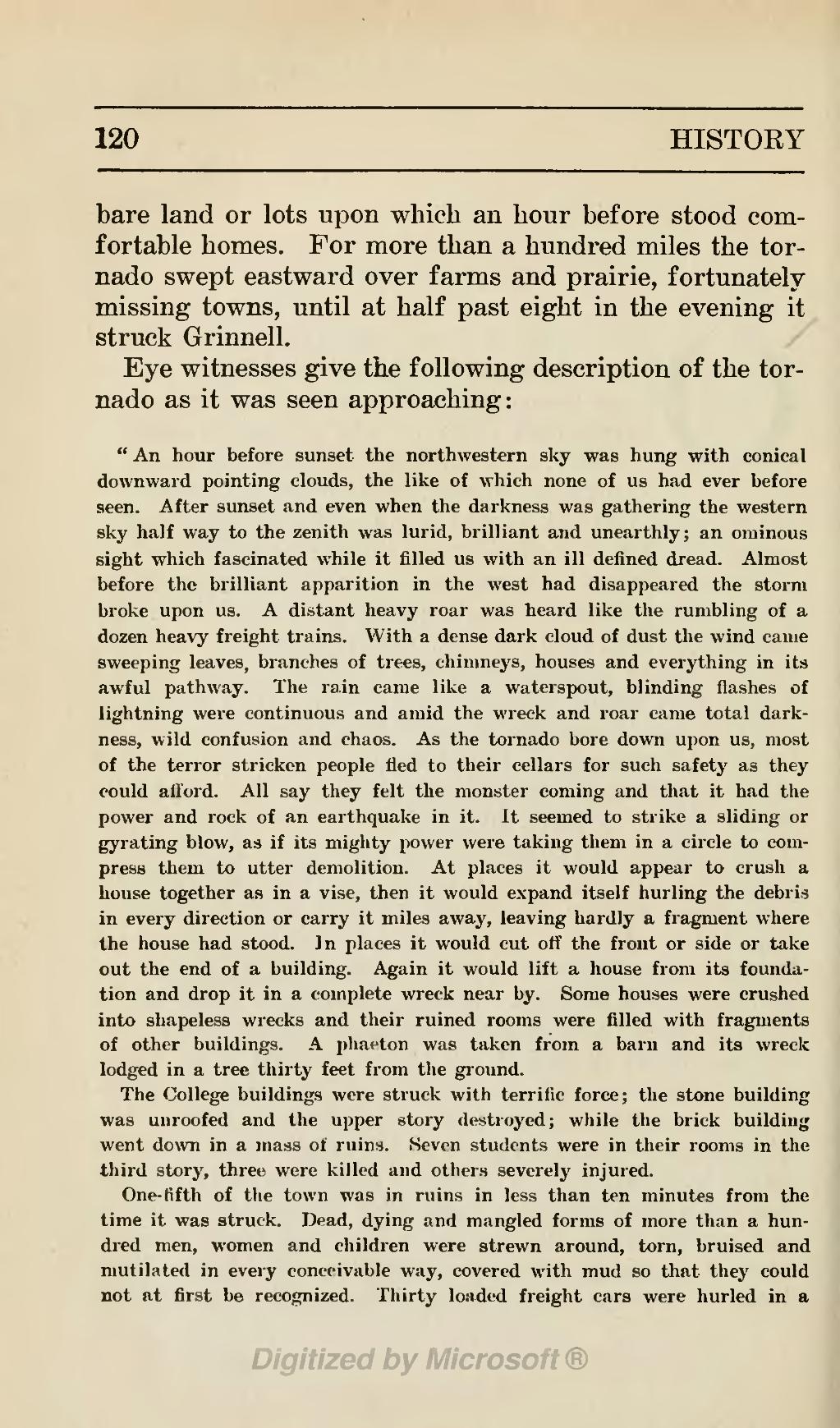bare land or lots upon which an hour before stood comfortable homes. For more than a hundred miles the tornado swept eastward over farms and prairie, fortunately missing towns, until at half past eight in the evening it struck Grinnell.
Eye witnesses give the following description of the tornado as it was seen approaching:
“An hour before sunset the northwestern sky was hung with conical downward pointing clouds, the like of which none of us had ever before seen. After sunset and even when the darkness was gathering the western sky half way to the zenith was lurid, brilliant and unearthly; an ominous sight which fascinated while it filled us with an ill defined dread. Almost before the brilliant apparition in the west had disappeared the storm broke upon us. A distant heavy roar was heard like the rumbling of a dozen heavy freight trains. With a dense dark cloud of dust the wind came sweeping leaves, branches of trees, chimneys, houses and everything in its awful pathway. The rain came like a waterspout, blinding flashes of lightning were continuous and amid the wreck and roar came total darkness, wild confusion and chaos. As the tornado bore down upon us, most of the terror stricken people fled to their cellars for such safety as they could afford. All say they felt the monster coming and that it had the power and rock of an earthquake in it. It seemed to strike a sliding or gyrating blow, as if its mighty power were taking them in a circle to compress them to utter demolition. At places it would appear to crush a house together as in a vise, then it would expand itself hurling the debris in every direction or carry it miles away, leaving hardly a fragment where the house had stood. In places it would cut off the front or side or take out the end of a building. Again it would lift a house from its foundation and drop it in a complete wreck near by. Some houses were crushed into shapeless wrecks and their ruined rooms were filled with fragments of other buildings. A phaeton was taken from a barn and its wreck lodged in a tree thirty feet from the ground.
The College buildings were struck with terrific force; the stone building was unroofed and the upper story destroyed; while the brick building went down in a mass of ruins. Seven students were in their rooms in the third story, three were killed and others severely injured.
One-fifth of the town was in ruins in less than ten minutes from the time it was struck. Dead, dying and mangled forms of more than a hundred men, women and children were strewn around, torn, bruised and mutilated in every conceivable way, covered with mud so that they could not at first be recognized. Thirty loaded freight cars were hurled in a
